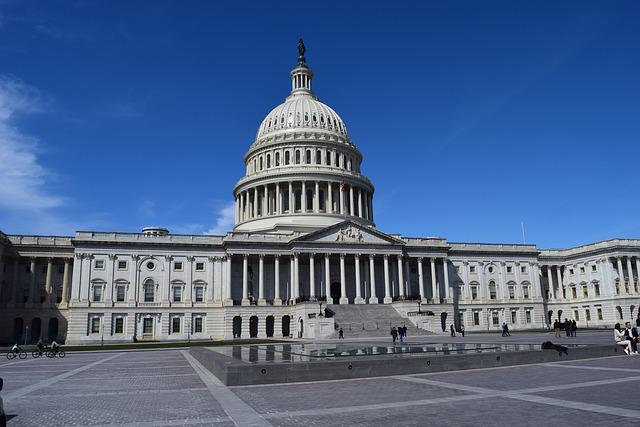
The Board’s (Almost Mandatory) Role in Form 990 Preparation
07.24.2024 | Linda J. Rosenthal, JD

In the scorching Washington summer of 2022, there was genuine suspense right up to the moment on August 7th when Vice-President Harris broke the 50-50 Senate tie vote.
On the line was the fate of the Inflation Reduction Act of 2022 (IRA) which “in essence… is a scaled-down version of the Build Back Better Act”: Passed by the House last November (under the BBB name) but unable to get through Senate roadblocks.
Nevertheless, what President Biden signed into law on August 16, 2022 (after the House signed onto the Senate version) was a landmark package of massive spending and investment more than offset by new revenue.
Along the winding and torturous path to passage of this historic and sweeping legislation, anyone and everyone had pounded the pavements around Capitol Hill, clamoring for their own priorities. We’ve previously discussed the wish lists of the nonprofit sector; see for example, Nonprofit Advocacy After The Omnibus Act (March 23, 2022) and Ambitious New Nonprofit Legislation (May 3, 2022).
“The Senate passed a $739 billion package of climate, health, and tax provisions that were first proposed in early 2021,” the editors of the National Council of Nonprofit’s NCN Advocacy Updates wrote in its August 8, 2022, edition. “The Inflation Reduction Act (H.R. 5376) would promote clean energy, extend Obamacare subsidies for three years, and permit Medicare to negotiate drug prices. The measure would impose a minimum tax on corporations with billion-dollar revenues and tax stock buybacks. About $300 billion of the revenues would go to deficit reduction.”
But it “does not include longstanding tax and funding policy priorities of the charitable nonprofit community. The YWCA USA responded with outrage at the news that House-passed funding for child care and early childhood education were not included in the bill.” (That list was spelled out in a February 2022 letter to President Biden and Congress co-signed by many nonprofit organizations around the country, which was then updated on June 13, 2022.)
“On the other hand, an energy conservation income tax credit in the bill was modified to ensure that charitable nonprofits and governments would be able to transfer the tax break to contractors and reduce the cost of adapting energy efficiencies.” For a deeper dive into this conservation credit and the nonprofit sector, see for example Benefits and Other Impacts in the Inflation Reduction Act for Nonprofits (August 18, 2022) Freed Maxick Blog and Inflation Reduction Act Would Expand 179D to Include Nonprofit Institutions (August 1, 2022), National Association of College and University Business Officers.
Just after the measure was signed into law, the National Council of Nonprofits published A Nonprofit Perspective on the Inflation Reduction Act (August 18, 2022) which “provides a partial listing of key measures of interest to charitable nonprofits.” In addition to the energy-conservation tax credit, “numerous provisions in the Act extend assistance and outreach to underserved and disadvantaged communities.
For instance, “[u]nderserved farmers, ranchers, and foresters will receive $2.85 billion in assistance and support. State, local, and Tribal governments will be offered grants and incentives to reduce air pollution, with an emphasis on reaching disadvantaged populations, environmental justice, and other communities. There will also be similar targeted spending in areas of rural energy development and drought response.”
Another provision that is generating a good deal of interest and (dis)information is the $80 billion infusion of cash into the IRS, over ten years, for “staffing and tech upgrades. More than half of the new spending is to be dedicated to enforcement, with the remainder to information technology, taxpayer services, and replacing retiring staff.”
The big question for the nonprofit sector is whether any of that money will “mean greater attention by the IRS to compliance within the tax-exempt sector and whether the IRS will enforce laws, like the longstanding Johnson Amendment, that protect charitable organizations from scam artists and partisan operatives.”
For various reasons we’ll discuss in a future post, it’s unlikely that any assistance from this $80-million pot of money will meaningfully turn around what has been, over the past two decades, a calculated (and successful) decimation of the exempt-organizations oversight function of the IRS.
See also NCN Advocacy Update (August 22, 2022) Major Climate, Health, and Tax Bill Signed Into Law and Enhanced IRS Funding.
Notwithstanding that few of the nonprofit sector’s specific wishes were granted, the Inflation Reduction Act of 2022 is a massive legislative achievement with broad benefits across society and addressing long-neglected critical areas of need.
As former President Barack Obama joked in a tweet to his vice president – (and harking back to a famous off-mic moment from Joe Biden to Mr. Obama in 2010 after passage of the Affordable Care Act): “This is a BFD.”
– Linda J. Rosenthal, J.D., FPLG Information & Research Director
